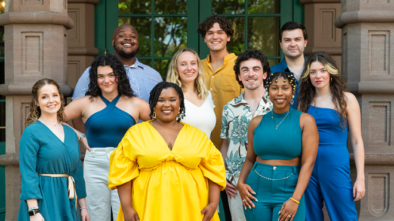Charleston and South Carolina Historic Political Facts

It is Election Day. I am sure you can feel the buzz in the air. Today, we exercise our right as a free Democratic land to vote in our local, regional and national leaders. We urge you all to get out and vote. Whether you are an elephant or donkey, we want you to be heard.
In the spirit of Election Day, we would like to share some interesting Charleston and South Carolina political facts to help broaden your knowledge of our great land.
Charleston and South Carolina Historic Political Facts:
- In 1670, settlers arrived at the Ashley River and established a settlement on its west bank, which they named Charles Town in honor of Charles II. City Assembly established tax-supported free library in that year as well.
- South Carolina was the 8th state to ratify the U.S. Constitution on May 23, 1788.
- In 1712, the territory of Carolina was divided into North and South; each having its own governor.
- By 1730, 2/3 of the colony were made up of people of African decent.
- In 1782, British forces were defeated and Charles Town was regained by the colonists.
- 1783, Charles Town is renamed Charleston.
- In the 1820′ South Carolinian John C. Calhoun developed the theory of nullification, by which a state could reject any federal law it considered to be a violation of its rights.
- In 1861, South Carolina become the first state to secede from the Union.
- The first shots of the American Civil War were fired on April 12, 1861 at Fort Sumter in the Charleston Harbor.
- Famous political figures born in South Carolina include Senator Strom Thurmond and Jesse Jackson.
- Charlestonian, Henry Middleton, was chosen president of the First Continental Congress in 1774. His plantation, Middleton Place, was home to three more generations of prominent South Carolina politicians and is now a carefully preserved National Historic Landmark.
- Along with Henry Middleton, John and Edward Rutledge, Thomas Lynch, Christopher Gadsden were also named delegates to First Continental Congress.
- In 1776, Charles Town was named the state capital. The state capital was moved to Columbia in 1786.
- For one week in May of 1791, President George Washington, America’s “Founder” and “Father” visited Charleston, SC.
- In 1869, Joseph Rainey first African-American in South Carolina to become U. S. Representative.
- A Charleston Judge, J. Watis Waring, dissented from a Federal District Court decision upholding the “separate but equal” doctrine in Briggs v. Elliott in 1951. His dissenting opinion was cited by the U.S. Supreme Court when it ruled in Brown v. Board of Education in 1954.
- In 1963, Rivers High School in Charleston became first racially integrated high school in South Carolina.
- A state court decision in 1947 opened the Democratic primaries to African-American voters.
- South Carolina’s legislature has a senate with 46 members and a house of representatives with 124 members. The state sends two senators and seven representatives to the U.S. Congress and has nine electoral votes.
- From 1876 to 1975 all the state’s governors were Democrats, and South Carolina was part of the “Solid South.”
Enjoy this mornings history and fact lesson.


